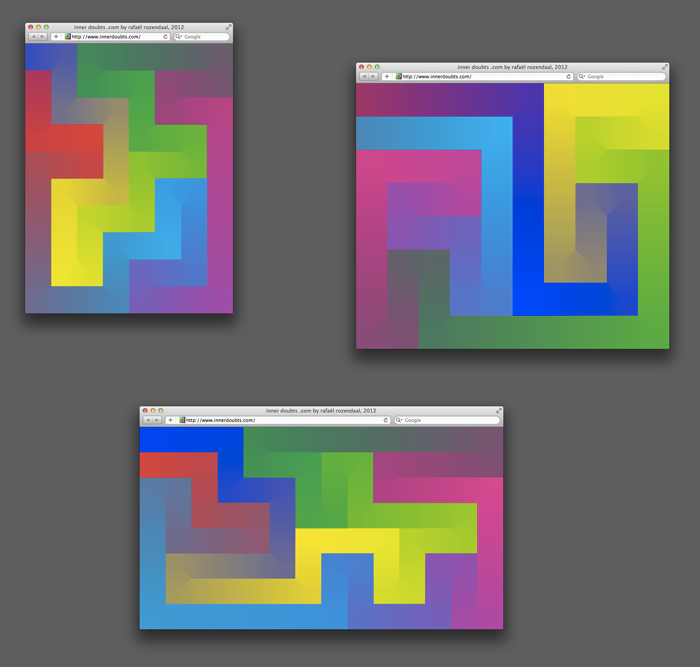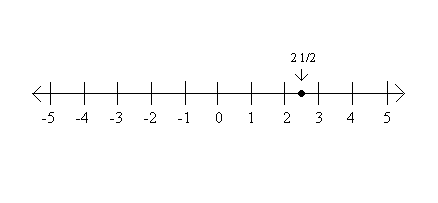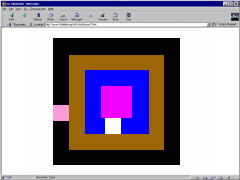
According to Wikipedia:
“Composition is the placement or arrangement of visual elements or ingredients in a work of art.”
Works of art usually have a fixed size. The artist will carefully position all the elements until a perfect tension is found.
What if the medium does not have a fixed size? How do you deal with composition?
Everybody uses their browser in their own way. Websites are viewed in various dimensions. This is an interesting moment for artists. Composition has been exhausted, many artists in many media have explored all the options, leaving little room for invention. But now you can make art objects (websites) that adapt.
A good website acts like gas, using all available space.
I’ve always tried to make websites that work any way you want them to, small, large, square, tall, flat. Some of my websites stretch, some scale, some crop, and some rearrange according to your browser size.
My approach (vector based generative images) is one possibility, but I think there are many ways to deal with composing images for a browser. Art historians of the world, please be alert, there are probably a lot of artists right now inventing ways to deal with “the liquid canvas”.
eat more vegetables
eat less meat
make more money
work on my posture
spend more time in nature
have a political opinion
give to charity
fix my parent’s computers
not worry

What was the art that captured the spirit of the industrial age?
What will be the art that captures the spirit of the information age?
Should art capture things, freeze them?
A lot of art freezes reality, it makes time stand still so we can have a better look.
Can today’s time still be frozen? Or are things moving too fast?
Or perhaps things are not even moving that fast? Is today that different from 10 years ago?
classic subjects in new formats
new subjects in classic formats
new subjects in new formats
classic subjects in classic formats
Ideally the work is not a manifestation of an idea, the work is the idea.
Am I drawn to it?
Do I feel a strong attraction or connection?
Does it trigger a series of thoughts?
Does it change my thoughts?
Does it set a mood?
Does it amplify my emotions?
Does it encourage me to make something?
Does it provide new information?
Is it beautiful?
Does it intensify perception?
What is the level of abstraction?
Does it awaken memories?
Does it make me curious?
Do I want more of it?
Does it summarize an era?
Is it innovative?
Does it stand out?
Do I remember it after 10 minutes?
Does it surprise me?

I was familiar with computers since I was small, and I had seen the internet on TV… but it’s harder to show a website on TV than to show TV on a website. My first real internet experience was at the library, I was 16 years old. I surfed a bit, mostly looking for interviews with bands. It was terribly slow, but I enjoyed it already. A few months later our home computer got a dial-up connection and I got more into it. I would write down my favorite websites on a piece of paper, I did not know about browser bookmarks…
Dutch progressive broadcasting station VPRO used to have a website with “Lifesavers”. Lifesavers were something that “does not happen in a book, does not happen on TV, an experience specific to the internet.”
It was a series of experimental websites by artists such as Peter Luining and Han Hoogerbrugge, exploring what a website could be, and playing with the slow connections of the internet, turning it into a strength.
I still love small files.
(this is part of a forthcoming interview by Johanna Bergmark)



